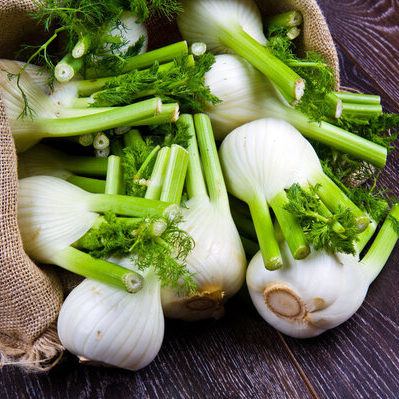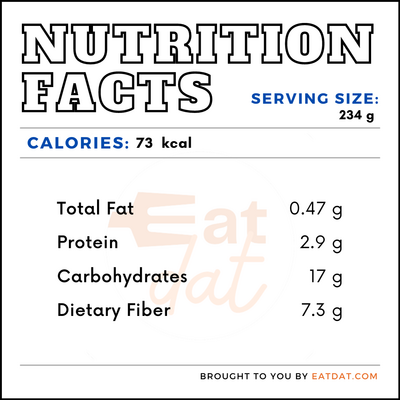
Fennel
also known as Florence fennel, Finocchio
What is Fennel?
Fennel is a flowering plant that is a part of the carrot family. This plant is native to the Mediterranean region and is particularly popular in Italy. This herb is known for its unique flavor, which is similar to licorice.
- It is a hardy perennial herb with feathery leaves, yellow flowers, long stalks, and round bulb bottom.
- There are two main varieties of this plant: herb fennel (Foeniculum vulgare) and the bulb type vegetable (Foeniculum vulgare var. dulce).
Some popular varieties of this plant include:
Herb Types
- Sweet Fennel
- Purpureum
- Rubrum
Florence Types
- Rhondo
- Victoria
- Cantino
- Mantavo
Origin of fennel
While the exact date of origin of this plant is unknown, history shows that ancient Egyptians used this herb for both food and medicine. The Greeks and Romans also used this plant for its medicinal properties. In medieval times, this plant was commonly hung over doorways to ward off evil spirits. In 961 AD, ancient Spanish agricultural records mention the seeds and stalks of this plant, as well as fennel water. Nowadays, this is cultivated and enjoyed the world over in a variety of dishes and drinks.
Function
It is known for its anise-like flavor and its many uses in the kitchen. While most cooks only use the bulb of this plant, every part can be eaten from its bulb to its seeds. The bulb of this plant can be eaten raw, but can also also be braised, sautéd, roasted, and grilled. The stalks are great for adding soups and stews, as well as using as a bed for roasted meats. Fennel fronds can also be used as an herb for adding to sauces, curries, salad dressing, dips, or as a topping.
Nutrition
This plant is full of vitamins and minerals, including:

This also contains folate, choline, beta-carotene, lutein, and zeaxanthin. This plant has been linked to improved bone health, maintaining or lowering blood pressure, decreased risk of heart health, boosting immunity, fighting some types of cancer, and reducing inflammation. It has also shown promise with aiding digestion, metabolism, healthy weight management, increased iron absorption, regulating estrogen, and improving skin health.
However, some individuals may be allergic to spices and should avoid eating it. Furthermore, this plant is considered a beta-blocker and should not be consumed by people who are on anxiety or heart disease medication. Also, this plant is not recommended for anyone who has experienced kidney damage or has kidneys which are not fully functional as it has high levels of potassium.
Commercial Production
Both the herb and vegetable varieties are grown from seeds. The commercial production of these plants requires full sun and soil with plenty of nutrients. Florence fennels is usually planted from mid-June to July so that the plant can grow in the cooler days of summer. Whereas, the herb grows best when planted in spring after the winter frost has passed. The herb variety of this plant does not transplant well due to its taproot structure.
Uses
Maximizing every part of the plant is simple when you store it properly. If the plant is whole, you can place it in a bag and store it in the refrigerator for 7-10 weeks. Cut this herb should have any browning parts removed, be placed in an airtight container, and then store in the fridge for 2-3 days. It’s also possible to freeze this by chopping and placing pieces in an ice cube tray or blanching larger sections and placing them in an airtight container. When frozen, this plant can last for 10-12 months.
Fennel recipes
This herb and vegetable can add flavor to a variety of dishes. Here are some popular recipes:
FDA Regulation
The Food & Drug Administration classifies fennel-Florence as a raw agricultural commodity and regulates its growing, harvesting, packing, and holding. Furthermore, the FDA classifies fennel seed as a spice and defines it as “clean, dried, ripe fruit of Foeniculum vulgare Mill”. The organization goes on to describe that this seed’s quality characteristics are measured by its oil, acid, ash, and moisture.
References
“Fennel.” Herbsociety.org, The Herb Society of America, www.herbsociety.org/file_download/inline/520b142e-66f4-45dc-b151-59283956b21e.
Grieve, M. “Fennel.” Botanical.com, A Modern Herbal, www.botanical.com/botanical/mgmh/f/fennel01.html.
“Fennel.” Herb Gardening, University of Illinois, web.extension.illinois.edu/herbs/fennel.cfm.
Ware, Megan. “Fennel: Nutrition and Benefits.” Medical News Today, MediLexicon International, 23 Aug. 2018, www.medicalnewstoday.com/articles/284096.
